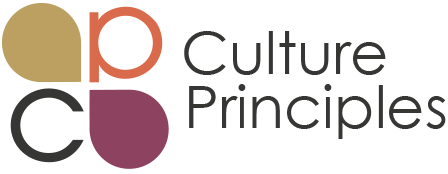 Some days, I feel like I am playing a ” gotcha ” game with clients, and I’m on the receiving end. “Danielle, you have mentioned that dominant culture norms prioritize urgency, yet you want us to slow down (cue the gotcha) while also acting urgently to address systemic injustice. Are we supposed to move quickly or be intentional? Which one is it? And friends to that, I say things are never so black and white in my world that I can’t find space to appreciate and act upon the in-between spaces.
Some days, I feel like I am playing a ” gotcha ” game with clients, and I’m on the receiving end. “Danielle, you have mentioned that dominant culture norms prioritize urgency, yet you want us to slow down (cue the gotcha) while also acting urgently to address systemic injustice. Are we supposed to move quickly or be intentional? Which one is it? And friends to that, I say things are never so black and white in my world that I can’t find space to appreciate and act upon the in-between spaces.
The Tension Between Now and Later
Imagine that you’re standing at a crucial intersection, one road leading to immediate, high-impact initiatives for Diversity, Equity, and Inclusion (DEI), the other winding toward long-lasting systemic change. But what if I told you this does not have to be an either/or scenario? What if I told you that the roads intersect and intertwine in ways you’ve yet to appreciate fully? Leaders, it’s time to abandon the road well-traveled where you’ve been settling for just one route. I want to invite you to challenge your perspectives and ingrained biases to explore how urgency and sustainability in DEI can not only coexist but mutually enhance one another.
The Fallacy of Quick Fixes: Unconscious Bias and Stereotypes
As we travel this road, we need to confront an uncomfortable truth: the allure of quick fixes often plays to our unconscious biases. Short-term DEI initiatives can often be symbolic gestures that conform to the current societal expectations but barely scratch the surface of the deeply rooted inequities that persist within an organization. Consider for a moment the removal of statues, renaming of sports teams, or the swapping of logos on your favorite food grocery items. Each of these moves successfully eliminates the physical manifestation or short-term issue of problematic symbols but fails to address the systematic injustice buried deep in our cultural norms.
As you consider your organization’s first experiences in grappling with DEI issues, what were they? Perhaps it was a one-off workshop, or how to respond to a PR nightmare in which bias was identified, or more commonly, an all-staff conversation to discuss the frequent news cycle related to systemic racism.
Taking a step back, as you examine the results, how did those efforts affect the DNA of your organization? Did the company experience lasting change, or did it simply pacify the immediate cries for action?
Sustainable DEI is a Commitment
Sustainability in DEI isn’t just a buzzword to be thrown around; it’s a promise, an ongoing commitment. It’s about creating a culture resilient to external shocks and internal upheavals. It’s not just about recruiting diverse talent but also about nurturing an inclusive culture that transforms the power dynamics and dismantles systemic barriers. This kind of sustainability requires well-thought-out planning, daily implementation, and periodic reevaluation. In other words, this type of change requires an intentional slowing down to deepen the impact of your DEI efforts.
Leadership plays an immense role here. One of the projects we undertook at Culture Principles involved an organization caught in a cycle of short-term DEI responses. They had written and published a DEI statement, held multiple conversations internally with staff, and updated their website to reflect the diverse markets they served. Yet, they were not making the impact that they hoped to achieve. In part, this reflected a haphazard plan thrown together to address surface-level concerns raised by staff questioning how the organization demonstrated its commitment to DEI.
Through a long-term approach at Culture Principles, we’ve had the privilege of guiding organizations beyond the superficial to the systemic. By conducting comprehensive equity audits, developing multi-year DEI action plans, and utilizing coaching to shift mindsets, we’ve seen firsthand how organizations can transition from merely responding to incidents to proactively building a culture that preemptively tackles racial inequities daily.
As we reflect on these successful shifts, let’s consider our journey through the intricate landscapes of Diversity, Equity, and Inclusion. It’s critical to refrain from allowing the allure of quick fixes to sidetrack us from our core mission of creating systemic, enduring change. Immediate actions have their place, of course, but they often serve as seductive diversions, drawing us away from the more profound, more transformative work that awaits. This is just part one of a two-part series aimed at reshaping your understanding of DEI paradigms. We’re tackling that complex intersection where the urgency of immediate action meets the sustainability of long-term planning. Stay tuned for part two next week, where we’ll delve deeper into the mechanics of building a DEI culture that not only withstands the test of time but thrives in its richness and diversity.
